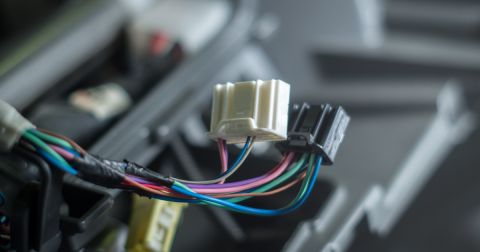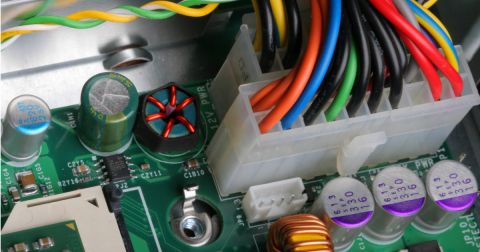Streamline Model-Based Harness Design for Complex PCB Systems

Designing complex PCB systems presents significant challenges, especially when managing multiple boards, intricate harness requirements, and the need for seamless harness design collaboration. Engineers often juggle various tools and processes that introduce bottlenecks into their workflows. Altium addresses these issues by integrating PCB, multi-board, and harness design into a unified solution. This blog explores how this integration simplifies model-based harness design and transforms the approach to complex systems.
Why Model-Based Harness Design Matters in Collaboration?
Harness design plays a pivotal role in the functionality and reliability of PCBs, particularly as systems grow in complexity and interconnectivity. A meticulously crafted harness ensures proper connectivity and prevents costly manufacturing and assembly errors. The challenge however, lies in managing how the harness design interacts with factors like PCB layouts and multi-board systems, especially when using disparate tools that lack cohesive support.
What Is Model-Based Harness Design?
Model-based design entails digitally creating the complete wiring harness system, encompassing schematics and physical layouts. This approach ensures valid connectivity and allows for comprehensive validation, with all documentation generated directly from the model, guaranteeing accuracy. In contrast, traditional methods often involve manual creation using separate tools for each component, leading to inefficiencies. Model-based harness design integrates all information, linking harness elements within the overall system.

Key benefits include:
- Improved Accuracy: Automated error-checking confirms that all connections meet system requirements.
- Faster Development: Linking logical and physical designs facilitates smooth propagation of updates throughout the system.
- Less Complex Manufacturing: Automatically generated, detailed documentation minimizes errors during production.
The Pain Points of the Traditional Design Approaches
Conventional design workflows for PCBs, multi-board systems, and harnesses often rely on separate tools, resulting in disconnected processes prone to errors. Engineers frequently switch between software, manually update designs, and manage collaboration, leading to several issues:
- Fragmented Tools: Transitioning between different software for PCBs, multi-board systems, and harnesses causes inefficiencies and errors.
- Limited Collaboration: Outdated or siloed design files hinder remote team coordination.
- Error-Prone Processes: Manual updates across various platforms increase the likelihood of mismatched connectivity and invalid designs.
Altium: All-In-One Solution for Your Needs in PCB, Harness Design, and Collaboration
Altium addresses these challenges by offering a single environment for PCB, multi-board, and harness design. Engineers can confidently design single boards or multi-PCB systems, ensuring that every aspect of their design remains current and error-free.

Main features include:
- Logical-to-Physical Workflows: Seamlessly transition from multiboard schematics to wiring diagrams and physical harness layouts.
- Connectivity Validation: Verify and validate connections between PCBs and harnesses, reducing errors and saving time.
- Dynamic Synchronization: Automatically propagate updates from logical to physical designs, minimizing manual effort and errors.
- Production-Ready Documentation: Generate wiring diagrams, layout designs, BOMs, and assembly instructions directly from the design, streamlining manufacturing and reducing turnaround times.
Improve Harness Design Collaboration with Altium
Modern engineering demands borderless harness design collaboration. Altium enables real-time collaboration, secure file access, robust version control, and seamless teamwork, ensuring all project stakeholders remain aligned.
Other benefits of collaboration include:
- Cloud Workspace: Allows design files to be kept secure and accessible from any device.
- Real-Time Feedback: Share designs with your team for comments and approvals instantly.
- Versioning Control: Keep track of the changes in design and, if necessary, revert to earlier versions.
The Integrated Advantage for Complex Systems
Altium introduces a new dimension in PCB and harness design, providing engineers with a unified environment to streamline workflows. By consolidating all design elements into one platform, engineers can focus on innovation rather than juggling multiple tools and processes. Automated workflows reduce errors and ensure consistency, while collaborative features enable teams to work seamlessly from any location.
Key advantages:
- Efficiency: All design elements are combined into a single solution, maintaining a streamlined workflow.
- Accuracy: Automated checks run smoothly, minimizing errors and ensuring consistency.
- Scalability: Projects ranging from single-board to multi-board interconnected systems are achievable.
- Collaboration: Teams remain synchronized, even when working across different locations and time zones.
Application Across Industries
This integrated approach is particularly beneficial for industries that demand precision and complexity, such as aerospace, automotive, and industrial automation.
Use cases include the following:
- Aerospace: Leading harness design activities for advanced avionics systems.
- Automotive: Simplifying wiring and connectivity in electric and autonomous vehicles.
- Industrial Automation: Ensuring reliable communication between control systems and machinery.
Revolutionize Your Design Workflow
Altium offers comprehensive solutions for engineers tackling the complexities of modern PCB systems. These tools empower teams to innovate and collaborate effectively, delivering error-free designs through a seamless, unified PCB, multi-board, and harness design process.
Want to seamlessly design wiring for your harness? Experience the power of wire harness design in Altium Develop.











